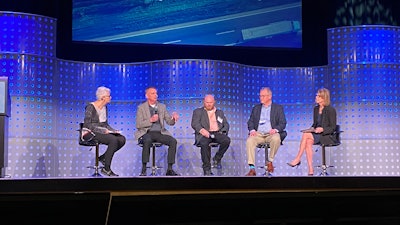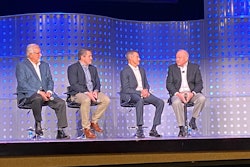
The first in-person Heavy Duty Aftermarket Dialogue in two years concluded with an engaging fleet discussion Monday in Grapevine, Texas.
As expected, the ongoing parts shortage created and exacerbated by the pandemic led to most of the conversation. Following the day’s theme, Monday’s fleet panelists reiterated the value of transparency in the current circumstances. Carriers understand there are few product lines today that can be ordered and shipped without delay and they say have learned to accept that. Where they become frustrated is when suppliers fail to update them that a product’s availability has suddenly shifted or is about to change.
“The minute you know you have a shortage, I want you to call us,” says Mike McDonald with Benore Logistics.
Adds Forward Air’s Tom DePorter to Monday’s supplier audience, “We know right now that you guys are in the same boat as we are; that there are surprises around every corner,” he says. “I want to the know bad news as soon as you know it so we can react.”
The panelists say most suppliers have been good in that regard — particularly over the last six months. Each panelist admitted to increasing their inventory levels at their terminal locations throughout 2021 and have been quick to purchase in bulk when informed of high-volume components that may soon become unavailable.
Carriers also say vendors shouldn’t be offended if a customer looks elsewhere for a product it needs to get a truck on the road. The current parts shortage is so extreme that carriers can’t wait around for a part to arrive from one vendor if another viable aftermarket option is available from someone else.
[RELATED: HDAD session reviews D.C. movement on issues affecting the industry]
PAM Transport’s Shane Barnes says his company has even removed parts from new trucks it just received to keep existing trucks moving. He says the company’s OEM partner approved the move and replenished those new trucks with the necessary components once they again became available.
“We’d never done that before,” he says. “We’d pulled from wrecked trucks and such, but not that.”
Yet despite the current predicament, Monday’s fleets remain optimistic about trucking’s supply chain, the general economy and their businesses. All three panelists said fortunately their maintenance and service requirements haven’t shifted dramatically since the pandemic began, which has kept their service shops from being overrun. They also noted their workforces have become more efficient and productive after surviving 2020 and 2021, which bodes well for the future.
The next year won’t be an easy one for anyone, but cooperation and coordination will go a long way toward making the year a positive one.











